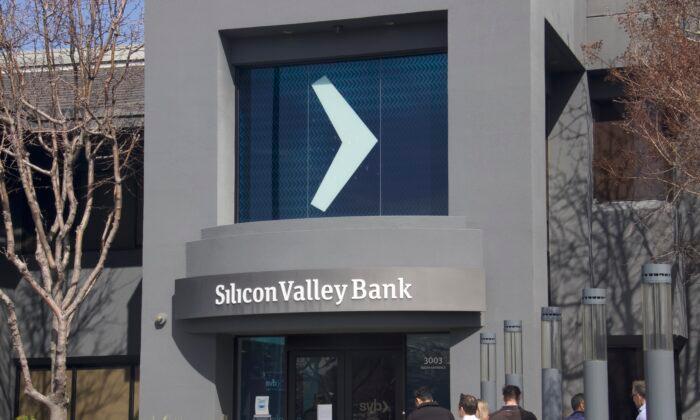Audit giant KPMG is standing by its audits of Silicon Valley Bank (SVB) and Signature Bank, which collapsed when customers rushed to withdraw their savings in panic-fueled bank runs.
The two banks failed not long after their respective annual reports were certified by KPMG, one of the so-called “Big Four” accounting firms, a list that also includes Deloitte, Ernst & Young, and PricewaterhouseCoopers.
He pointed to “market-driven events” and “unpredictable” customer reactions to such events as examples of factors behind bank failures that audit work is powerless to address.
“As we take into account everything we know today ... we stand behind the reports we issued and we think we followed all professional standards,” Knopp told the outlet.
Knopp insisted that KPMG “absolutely” considered all the facts that were known up until the day the audits were issued, adding that it’s impossible to know with certainty what will happen after the reports are released.
He didn’t go into the specifics of the causes of the twin bank failures, speaking only in general terms about “actions” and “reactions” in the context of bank runs.
The SVB collapse came as depositors rushed for the exits as word spread that the bank had booked huge losses on its bond portfolios, which eroded in value due to rising interest rates.
Signature’s failure came as panic spread from the collapse of SVB and as Signature’s connections with the crypto space seemed to spook depositors, who rushed to withdraw their money.
‘Going Concern’ Warnings
KPMG signed its audit of SVB on Feb. 24, two weeks before the bank failed. The Signature audit was signed off on by KMPG on March 1, a little over a week before its collapse.Questions have been raised as to why neither of KPMG’s two audits included a so-called “going concern” warning, which would be a requirement if the audit firm had substantial doubt as to whether the banks could survive over the next 12 months.
A KPMG spokesperson told The Epoch Times in an emailed statement that the company had no specific comment on the matter due to client confidentiality.
In general terms, however, the spokesperson said that “any unanticipated events or actions taken by management after the date of an opinion could not be contemplated as part of the audit.”
“It’s important to recognize that audit opinions, which only address the financial statements and internal controls of the business, are based on audit evidence available up to and at the date of the opinion,” the spokesperson added. “We conduct our audits in accordance with professional standards.”
Experts say it’s likely that KPMG will face regulatory scrutiny over the audits.
The failures of SVB and Signature were the second and third biggest bank collapses in U.S. history and drew fears of contagion risk. This prompted U.S. financial authorities to adopt a “systemic risk exemption” and expand the FDIC’s guarantee to cover all the deposits at the two banks, so including money that would normally be uninsured and therefore subject to market discipline and losses.
There has been some opposition to the blanket coverage, with some saying it fuels moral hazard and amounts to a bailout whose costs will be borne by customers of other banks that pay annual deposit insurance premiums to the FDIC.
Implications of SVB, Signature Failures
The lighting-fast collapse of SVB and Signature Bank has fueled questions among everyday savers and retail investors about possible impacts on their finances, even if they didn’t have any deposits at either of the failed banks.Following the twin collapses, the Federal Reserve rolled out an emergency funding facility for banks and other deposit-taking financial institutions, the Treasury Department backstopped the mechanism with $25 billion, and the FDIC expanded its guarantee to all deposits at the two banks.
President Joe Biden said on Monday that the emergency measures mean the U.S. banking system is “safe” and Americans can “have confidence” that their deposits are secure.
While bank stocks have taken a beating due to the twin failures, some experts say that the spillover implications for other banks are likely to be limited.
“This is a classic asset-liability mismatch, triggered by higher rates, and compounded by leverage,” Jurrien Timmer, director of global macro at Fidelity, said in a statement.
As the Federal Reserve has raised rates to quell soaring inflation, bond values have decreased and banks like SVB have taken losses on their bond assets.
“The good news is that this seems to be an isolated incident, or at least a problem that may be limited to some smaller banks,” Timmer added.
While some economists have compared the current situation to the system-wide financial meltdown that took place in 2008, others pushed back on this idea, arguing that what happened now is more narrow in scope and unlikely to escalate into a systemic crash.
“In my view, this does not appear to be a situation that could become systemic, like the subprime mortgage collapse did in 2007,” Timmer said.
SVB’s failure was sparked when it took $1.8 billion in losses after liquidating much of its Treasury portfolio, which dropped in value due to the Fed’s interest-rate hikes.
FDIC chair Martin Gruenberg warned recently that U.S. banks are sitting on unrealized losses on their bond holdings of around $620 billion, but added that banks in the country are “generally in a strong financial condition and have not been forced to realize losses by selling depreciated securities.”
A few regional banks have seen their shares drop in the wake of the SVB and Signature failures and credit ratings agency Moody’s Investor Service has put six banks on review for a downgrade.
Also, Moody’s on Monday cut its view on the entire U.S. banking sector, from stable to negative, citing “rapid deterioration in the operating environment.”





